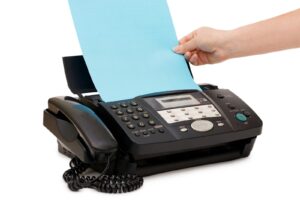Back to: Computer Studies JSS1
Welcome to class!
In today’s class, we shall be talking about telex and fax as an ancient method of transmitting information. Please enjoy the class!
Ancient Methods of Transmitting Information – telex and facsimile(Fax)
Before the internet revolutionized communication, humans relied on various ingenious methods to transmit information across vast distances. This class note explores two such methods: telex and facsimile (fax), focusing on their historical context, technological principles, and impact on society.
Telex

Historical Context:
Invented in the 19th century, the telex evolved from telegraph technology. Initially used by businesses for commercial communication, it gained popularity in the mid-20th century, becoming a vital tool for government agencies, news organizations, and stock exchanges.
Technology:
Telex machines resembled typewriters, but instead of printing letters, they transmitted electrical signals over telegraph wires. These signals were then interpreted by receiving machines, reproducing the typed text.
Impact:
Telex revolutionized long-distance communication by offering a faster and more reliable alternative to traditional mail. It facilitated international trade, diplomacy, and news dissemination, playing a key role in shaping global events.
Facsimile (Fax)

Historical Context:
Developed in the late 19th century, fax technology initially struggled to gain widespread adoption due to technical limitations and high costs. However, advancements in electronics and laser technology led to its commercial success in the late 20th century.
Technology:
Fax machines scan physical documents, converting the image into electrical signals. These signals are then transmitted via telephone lines and reconstructed by a receiving machine, reproducing the original document.
Impact:
Fax facilitated the transmission of documents like contracts, images, and diagrams, streamlining business transactions and government processes. It also played a significant role in the spread of information and media, allowing for the publication of newspapers and magazines in remote locations.
Comparison of Telex and Fax:
Similarities:
- Both were asynchronous communication methods, meaning messages could be sent and received without real-time interaction.
- Both relied on existing infrastructure, namely telephone lines, for transmission.
- Both offered significant advantages over traditional mail in terms of speed and reliability.
Differences:
- Telex transmitted typed text, while fax transmitted images and documents.
- Telex required specific machines and trained operators, while fax machines were eventually integrated into personal computers.
- Telex usage declined significantly with the rise of email, while fax continued to be widely used in certain industries like healthcare and law.
Telex and fax, though largely obsolete today, represent significant milestones in the history of information communication. They demonstrate human ingenuity in overcoming limitations and developing technologies to share knowledge and connect across distances. Their influence is still felt in our modern communication systems, reminding us of the continuous evolution of information technology.
We have come to the end of today’s class. I hope you enjoyed the class!
In the next class, we shall be discussing Modern methods of Transmitting Information – Radio and television.
In case you require further assistance or have any questions, feel free to ask in the comment section below, and trust us to respond as soon as possible. Cheers!
Question Time:
- How did telex and fax technology impact business communication and international trade?
- How did these technologies influence the spread of news and information in the 20th century?
- What were some of the social and cultural implications of using telex and fax, particularly in the context of Cold War communications?
- What were some of the technical limitations of telex and fax, and how were these limitations overcome?
- What was the role of operators in using telex machines, and how did their work differ from the way fax machines were operated?
